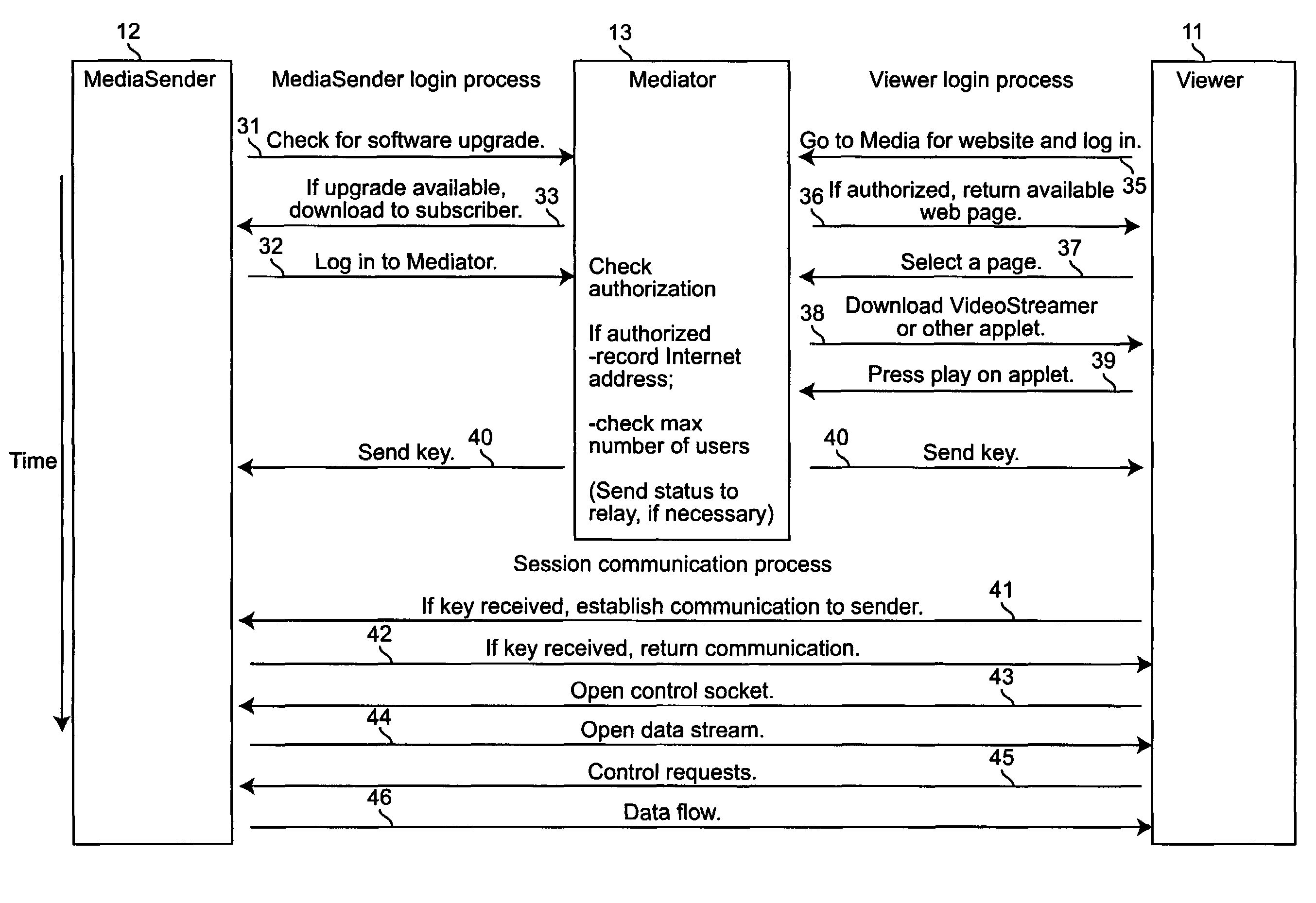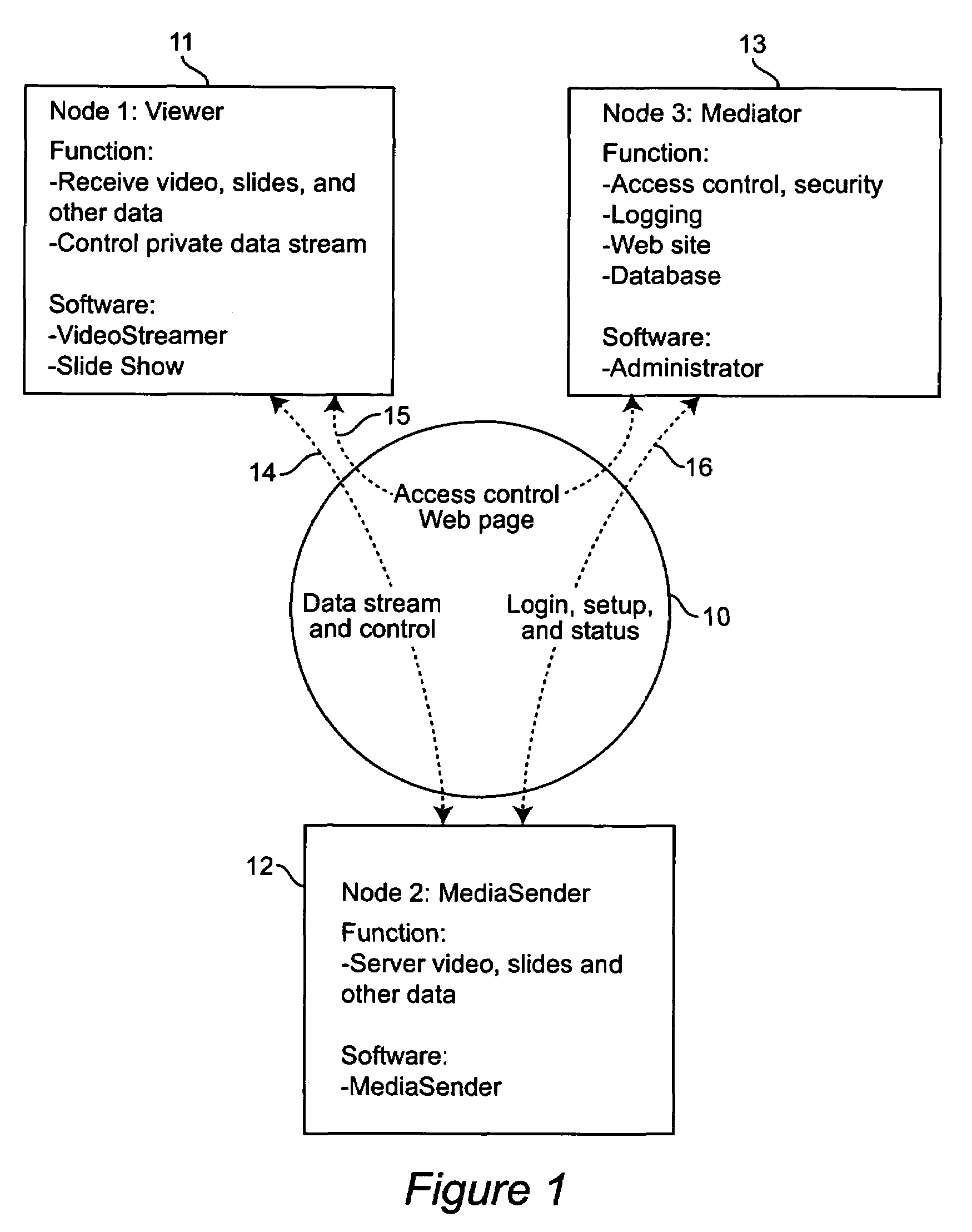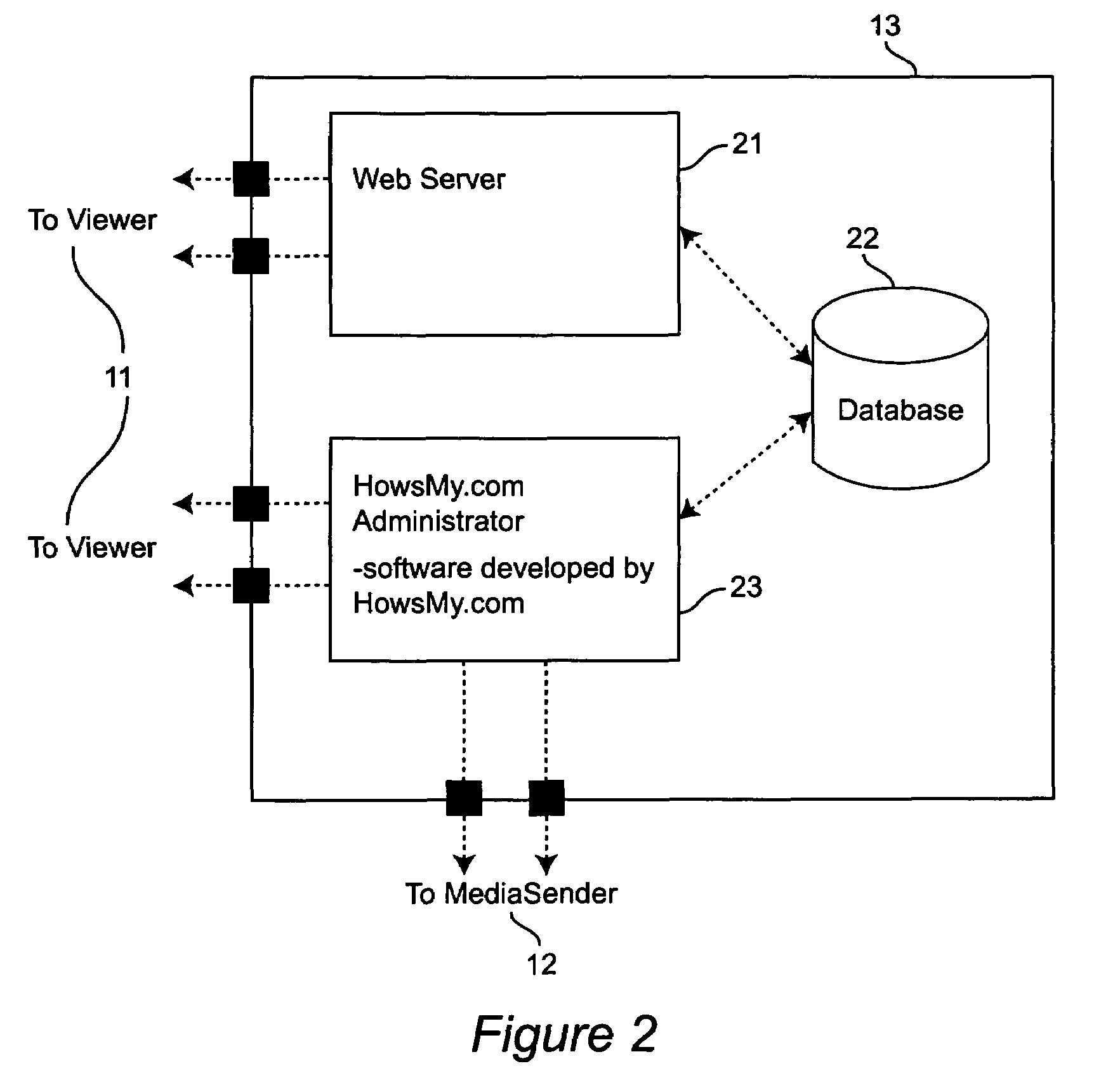Point-to-point data streaming using a mediator node for administration and security
a mediator node and data streaming technology, applied in the field of distributed client/server computing systems, can solve the problems of inconvenient administration and security, cost and difficulty of acquiring and installing the software necessary to offer generalized services over the internet, and inconvenient use for the average user,
- Summary
- Abstract
- Description
- Claims
- Application Information
AI Technical Summary
Benefits of technology
Problems solved by technology
Method used
Image
Examples
Embodiment Construction
[0065]The structure of the architecture is best described using a series of illustrations, in which FIG. 1 illustrates the structure of the Three Node Interconnected Architecture as implemented in a preferred embodiment. As opposed to a Three-Node Linear Architecture, the client (Viewer Node 11) and the server (MediaSender Node 12) communicate directly with each other over the Internet 10 for the data transfer, as shown by data stream and control item 14. A Three-Node Linear Architecture only has lines of communication running between MediaSender to Mediator Node and Viewer to MediaSender. The Three-Node Interconnected Architecture puts the bandwidth-intensive communications between the two nodes that require it (MediaSender 12 and Viewer 13) without having to stream information through the Mediator Node in the middle, but at the same time offers the benefits of the control and security of a Mediator Node which communicates directly with the Viewer Node 11 (via item 15) and directly...
PUM
 Login to View More
Login to View More Abstract
Description
Claims
Application Information
 Login to View More
Login to View More - R&D
- Intellectual Property
- Life Sciences
- Materials
- Tech Scout
- Unparalleled Data Quality
- Higher Quality Content
- 60% Fewer Hallucinations
Browse by: Latest US Patents, China's latest patents, Technical Efficacy Thesaurus, Application Domain, Technology Topic, Popular Technical Reports.
© 2025 PatSnap. All rights reserved.Legal|Privacy policy|Modern Slavery Act Transparency Statement|Sitemap|About US| Contact US: help@patsnap.com



